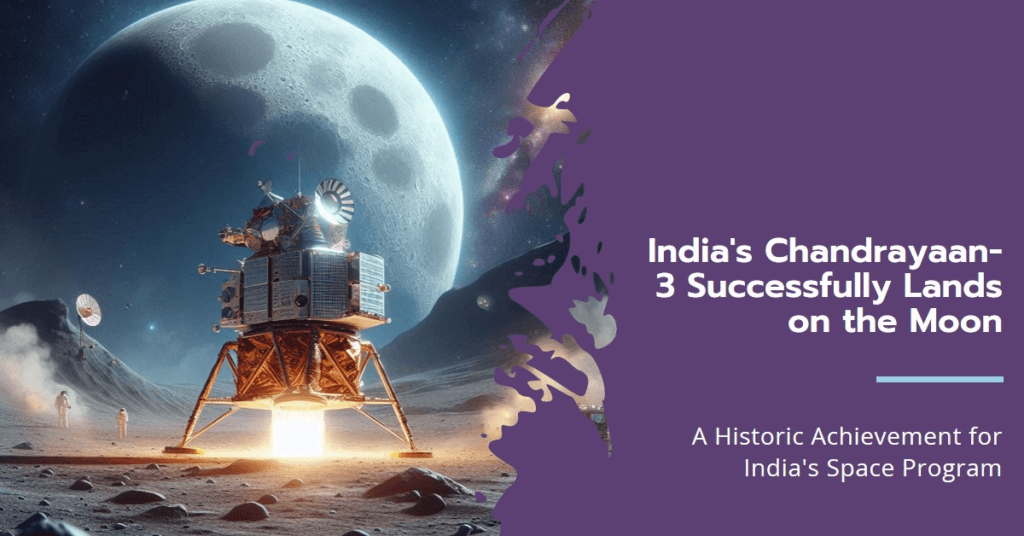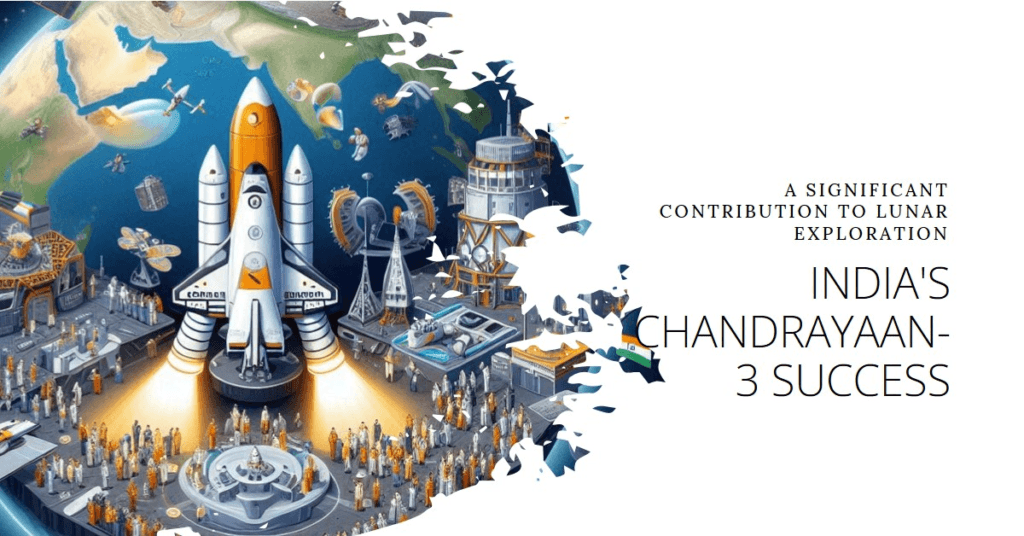India’s space journey has been marked by determination, innovation, and a relentless pursuit of knowledge. The recent success of the Chandrayaan-3 mission stands as a testament to these qualities, reinforcing India’s position as a formidable player in global space exploration. This achievement is not just a victory for the Indian Space Research Organization (ISRO) but also a significant milestone in the broader narrative of space exploration, with far-reaching implications for future missions and international collaboration.
A Landmark Achievement

Chandrayaan-3, India’s third lunar exploration mission, was launched with a singular, ambitious objective: to successfully land on the moon. Building on the lessons learned from the Chandrayaan-2 mission, which faced challenges during its landing phase, Chandrayaan-3’s smooth touchdown on the lunar surface on August 23, 2024, marks a historic achievement. India has become the fourth country in the world, after the United States, Russia, and China, to achieve a soft landing on the moon, showcasing the nation’s growing technical expertise and scientific prowess.
The Significance of Chandrayaan-3

The success of Chandrayaan-3 is significant for several reasons. First, it demonstrates India’s growing capability in space exploration, especially in executing complex missions with limited budgets. ISRO’s cost-effective approach has become a model for space agencies worldwide, proving that significant achievements can be made without the enormous budgets typical of space missions from more established spacefaring nations.
Second, the mission underscores India’s commitment to contributing to global scientific knowledge. Chandrayaan-3’s lander and rover are equipped with instruments designed to study the lunar surface’s composition, understand seismic activity, and investigate the presence of water ice in the moon’s south polar region. These findings could provide critical insights into the moon’s history and its potential for future human colonization.
Implications for India’s Space Program
Chandrayaan-3’s success is expected to propel India’s space program into a new era of exploration and innovation. Several key implications emerge from this achievement:
- Enhanced International Collaboration: The success of Chandrayaan-3 strengthens India’s position as a reliable partner in international space endeavors. With growing interest in lunar exploration and potential future missions to Mars and beyond, India is poised to play a crucial role in collaborative efforts. This could lead to increased partnerships with other space agencies, such as NASA, the European Space Agency (ESA), and even private space companies.
- Increased Investment in Space Technology: The mission’s success will likely spur further investment in India’s space program, both from the government and private sector. With the global space industry expected to reach new heights in the coming years, India’s demonstrated capabilities could attract significant attention from international investors and companies looking to collaborate on cutting-edge space technologies.
- Inspiration for Future Generations: Chandrayaan-3’s achievement serves as a source of national pride and inspiration for future generations of Indian scientists, engineers, and space enthusiasts. The mission highlights the potential for innovation and success in the face of challenges, encouraging young minds to pursue careers in science and technology.
- Focus on Advanced Space Missions: With the successful execution of Chandrayaan-3, ISRO is likely to focus on more advanced missions. This could include the Gaganyaan mission, aimed at sending Indian astronauts into space, and the Aditya-L1 mission, which will study the sun. These missions will further establish India as a leader in space exploration and contribute to our understanding of the cosmos.
Impact on Global Space Exploration

The global space community has taken note of Chandrayaan-3’s success, recognizing it as a significant contribution to lunar exploration. As countries around the world ramp up their space programs, India’s achievements demonstrate that space exploration is no longer the domain of a few superpowers. This democratization of space has the potential to accelerate the pace of discovery, foster international collaboration, and create a more inclusive space environment.
India’s approach to space exploration, characterized by innovation, cost-effectiveness, and a focus on scientific research, offers a unique perspective that complements the efforts of other nations. As the world looks toward more ambitious goals, such as establishing lunar bases and eventually exploring Mars, India’s contributions will be increasingly valuable.
Conclusion
The success of the Chandrayaan-3 mission is a proud moment for India and a significant step forward for global space exploration. It highlights India’s growing capabilities, fosters international collaboration, and inspires future generations to reach for the stars. As ISRO continues to push the boundaries of space exploration, the world will undoubtedly be watching closely, eager to see what the future holds for India’s space program and its role in humanity’s journey to the stars.
#epicinfinite #epicarticle #epicblog
We’d love to hear your thoughts on India’s Chandrayaan-3 mission! How do you think this success will influence future space exploration? Share your comments below.










